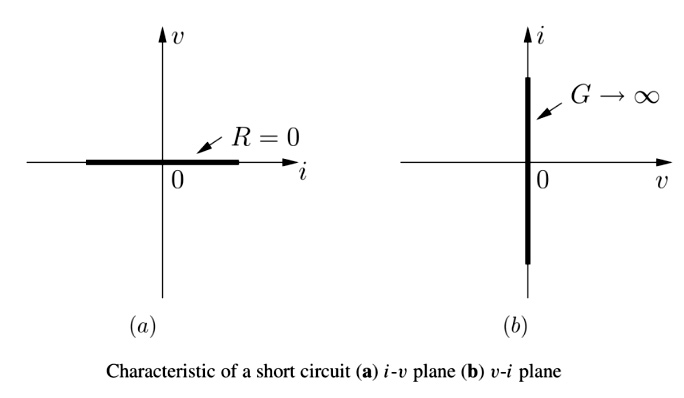For a voltage source to be neglected, the terminals across the source are
Right Answer is:
Short circuited
SOLUTION
If we put R=0, then v(t) =0 whatever be the current through the element. In this case, the 2-terminal resistor is said to be a short circuit. In the v-i plane, a short-circuit characteristic is the i axis as shown in Fig. is zero, that is, R=0 and equivalently G = ∞,

or
A two-terminal resistor is called a short circuit iff its voltage v is identically zero irrespective of the currenti;i.e., f(v,i) = v =0.
In a short circuit, there’s zero voltage across a wire, no matter how much current flows through it. Because there’s no voltage across a short circuit, there’s zero absorbed power (p = 0 watts).
When you connect two points in a circuit that have different voltages, you get a short circuit. When this happens, you bypass the other parts of a circuit (called the load) and establish a path of low resistance, causing most of the current to flow around or away from some other parts in the circuit. Accidental short circuits, especially between the high and low voltages of a power supply, can cause strong current to flow, possibly damaging or overheating the power supply and the circuit if the circuit isn’t protected by a fuse.
